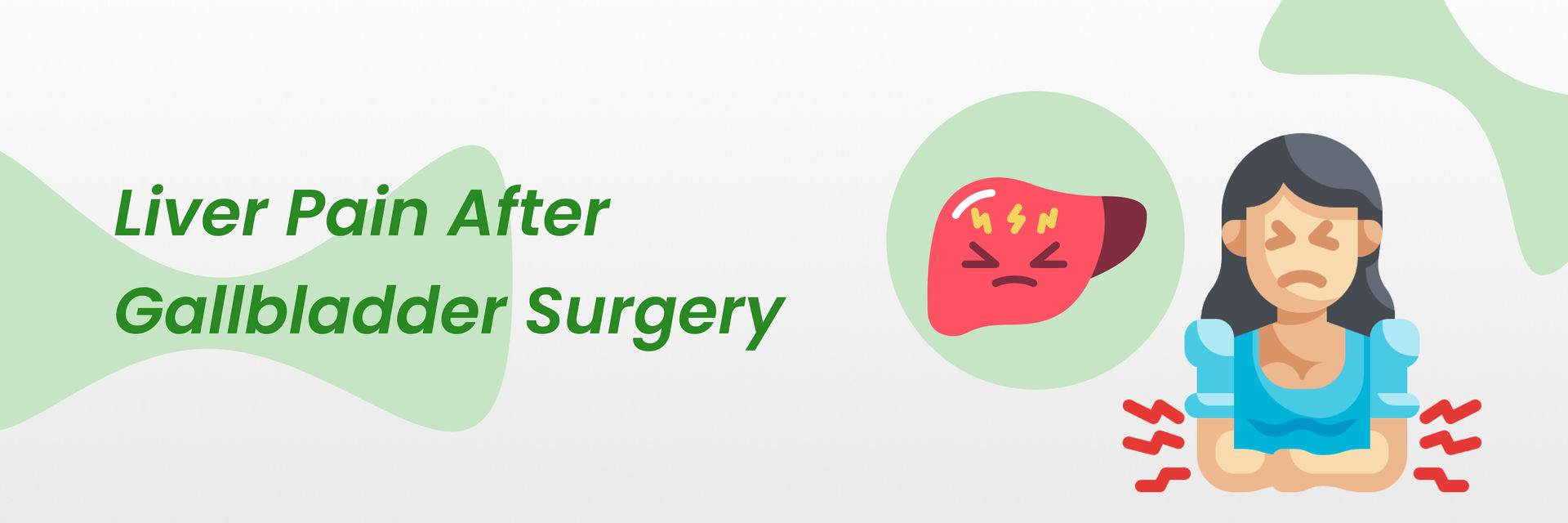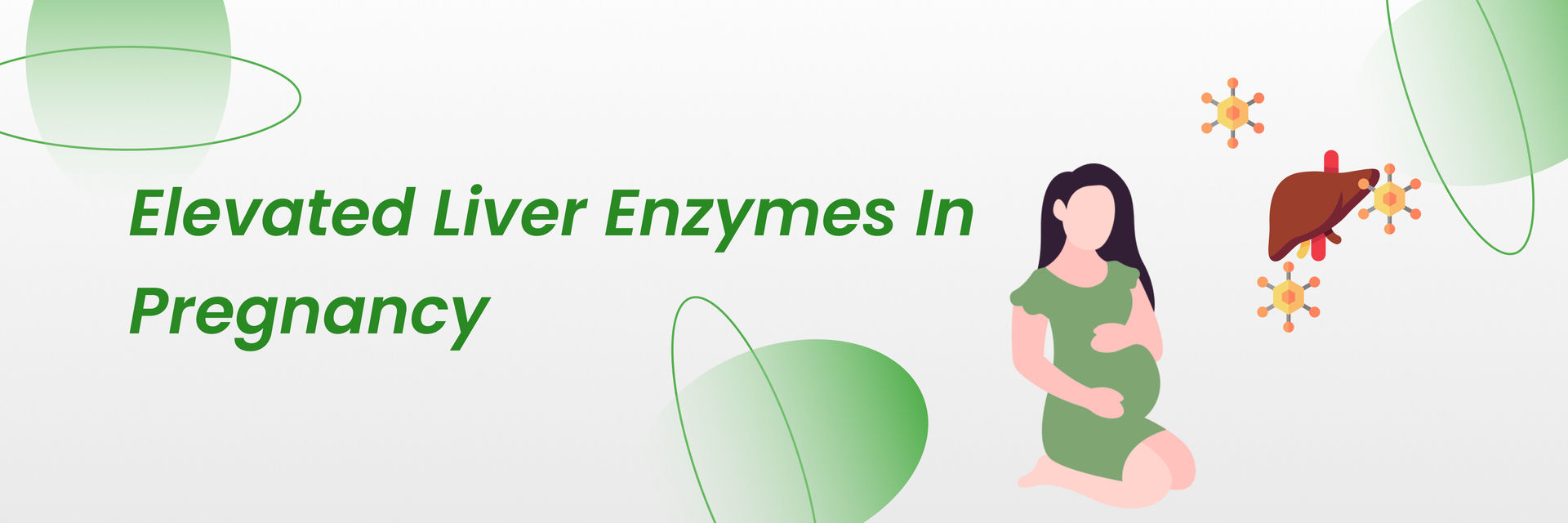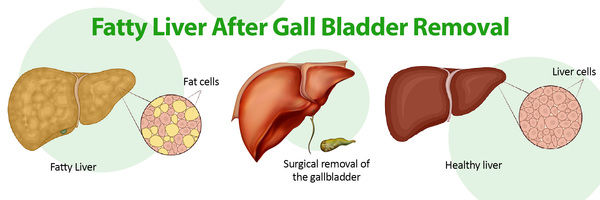Overview
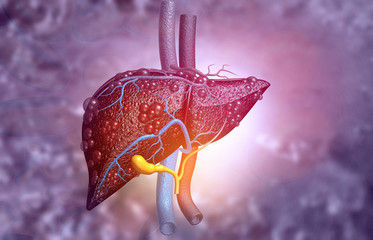
Gynecomastia can be one of the first noticeable symptoms of liver disease in men with liver cirrhosis. Cirrhosis is described as fibrosis or late-stage scarring of the liver. This happens when the scar tissue replaces the normal tissue, due to which the normal liver functioning gets disrupted. This can be caused by liver diseases and conditions like hepatitis and chronic alcoholism.
Let's take a look at how common gynecomastia in cirrhosis is.
It is a very common condition. In India, nearly 40-60% male population is affected by it. Studies have shown that more than 1 million cases per year are seen in India itself. Gynecomastia is seen in newborns and teenagers as well for different reasons.
| Age group | Neonates | Adolescents (10 – 19 years) | Adult (50 to 69 years) |
| Number of Incidents (approx) | 60 - 90 % | 50 - 60 % | 70% |
Statistics have shown that the prevalence of gynecomastia in cirrhotic patients was 44%. However, not all men with cirrhosis develop gynecomastia, and the severity can vary. Management of gynecomastia in liver cirrhosis involves addressing the underlying liver condition and managing the hormonal imbalance. This might include treating the liver disease, managing complications, and in severe cases, considering surgery to remove the excess breast tissue.
Wondering what causes gynecomastia in liver cirrhosis? Let's find out.
Your health is too important to ignore – schedule your appointment now.
Cause of gynecomastia in cirrhosis
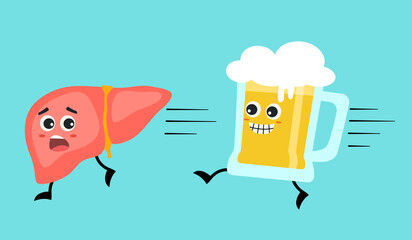
- Hormonal Imbalance: One of the primary causes of gynecomastia in cirrhosis is an imbalance between estrogen and testosterone levels. The liver plays a crucial role in metabolizing hormones, including estrogen. In cirrhosis, the liver's ability to regulate hormone levels is compromised. It leads to increased estrogen levels relative to testosterone.
- Increased Estrogen Production: In cirrhosis, the liver's ability to metabolize and clear estrogen from the body is impaired. This can result in higher levels of estrogen, contributing to the development of gynecomastia.
- Altered Sex Hormone-Binding Globulin (SHBG) Levels: Cirrhosis can affect the levels of SHBG, a protein that binds to sex hormones like estrogen and testosterone. Changes in SHBG levels can impact the balance between these hormones, potentially leading to gynecomastia.
- Decreased Testosterone Clearance: Impaired liver function can lead to reduced clearance of testosterone from the body, further contributing to the hormonal imbalance.
- Hyperestrogenism: Cirrhosis-related liver dysfunction can lead to a condition known as hyperestrogenism, where there is an excess of estrogen in the body. This can result from reduced clearance of estrogen and increased production of certain substances that simulate estrogen's effects.
- Alcohol Consumption: In cases of alcoholic cirrhosis, alcohol itself and its metabolites can contribute to hormonal imbalances that lead to gynecomastia.
We need to remember, that gynecomastia is a recognized symptom of cirrhosis, not all patients will develop it. It depends on the severity and many other factors.
How do you recognize if you have gynecomastia in cirrhosis? Let's find that out.
Symptoms of Gynaecomastia in cirrhosis
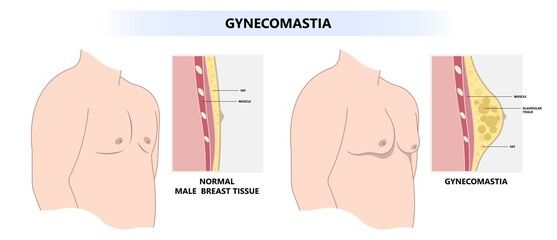
- Breast Enlargement: This is the primary symptom. It involves the enlargement of one or both breasts. It can range from a slight increase in breast tissue to a more noticeable one.
- Firmness and Consistency: The enlarged breast tissue might have a firm or rubbery consistency. It generally involves the presence of more than 2 cm of firm ductal breast tissue, differing from the surrounding fatty tissue.
- Pain or Tenderness: Pain or tenderness felt, which may vary in intensity.
- Asymmetry: Breast asymmetry is seen when one breast is larger than the other.
- Nipple Changes: The nipples and areola might become more prominent or puffy. Clothes rubbing against the nipple can cause increased sensitivity.
- Psychological Impact: Significant enlargement may lead to psychological distress, embarrassment and self-consciousness.
You should consult a doctor immediately if you feel excessive pain, observe swelling and discharge from nipples.
Are you thinking about how gynecomastia in Cirrhosis is diagnosed? We have got you covered! Keep reading to find out.
Diagnosis of Gynecomastia in Cirrhosis
It involves the following steps:
- Medical History: The doctor will ask for your detailed medical history.
- Physical Examination: Physical examination focusing on the breast tissue, abdomen, and other signs of cirrhosis is carried out. The size and consistency of the breast tissue, and any tenderness or pain, are also assessed.
- Liver Function Tests: Since it is related to liver dysfunction, liver function tests are required to be done. Check the levels of liver enzymes, bilirubin, albumin, and clotting factors. Abnormal results imply liver damage or cirrhosis.
- Hormone Levels: Blood tests are conducted to measure hormone levels of estrogen, testosterone, and other relevant hormones. Hormonal imbalance can cause gynecomastia.
- Imaging Studies: Ultrasound, CT scan, or MRI might be performed to assess the liver's condition and check for other possible causes of breast enlargement, like tumors.
- Biopsy: Liver biopsy is recommended to confirm and assess the severity of cirrhosis. Other tests for viral hepatitis and alcohol consumption could also be done.
Take charge of your health with the best treatment. Book your consultation now.
What are the different types of gynecomastia seen in cirrhosis?
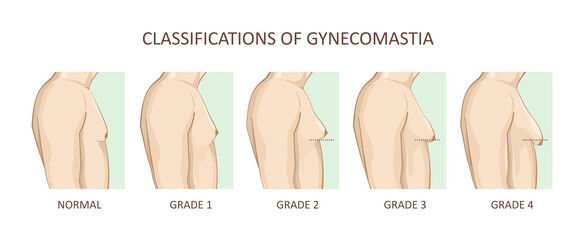
| Types of gynecomastia in cirrhosis | Details |
| Physiologic Gynecomastia |
|
| Nonproliferative Gynecomastia |
|
| Proliferative Gynecomastia |
|
| Mixed Gynecomastia |
|
| Pseudo gynecomastia |
|
Is gynecomastia in cirrhosis permanent?

Gynaecomastia in cirrhosis may vary in permanence, depending on specific factors:
- Severity of Cirrhosis: Severe and irreversible cirrhosis can lead to more persistent gynecomastia due to severe hormonal imbalances.
- Liver Function Improvement: Significant improvement in liver function may reduce the persistence of gynecomastia.
Gynaecomastia isn't a permanent condition; it progresses through phases:
- Inflammatory Phase: Initially, there's an inflammatory phase, often accompanied by breast tenderness.
- Scar Tissue Formation: After approximately 6 to 12 months, inflammation subsides, leaving behind scar tissue.
Don't let gynecomastia in liver cirrhosis hold you back – explore effective treatments for a better quality of life.
Are there any treatments available for gynecomastia in cirrhosis?

In most cases, little to no treatment is required. However, when gynecomastia results from an underlying medical condition like a pituitary gland disorder or a liver condition, treatment becomes necessary.
Treatment | Details |
 Management of Underlying Cirrhosis Management of Underlying Cirrhosis |
|
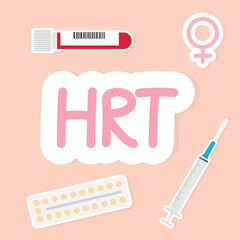 Hormone Therapy Hormone Therapy |
|
 Surgical Intervention Surgical Intervention | If gynecomastia is severe and continues to have a negative impact on your quality of life, despite trying other treatments, your doctor may suggest the option of surgically removing the excess breast tissue. |
 Consultation with Endocrinologist Consultation with Endocrinologist | Help to manage the hormonal aspects of gynecomastia and cirrhosis. |
Relapse rate of gynecomastia in cirrhosis

The relapse rates can be affected by the following causes:
- Severity of cirrhosis: The extent of liver damage and dysfunction can impact the persistence of gynecomastia. If cirrhosis is severe and irreversible, the hormonal imbalances contributing to gynecomastia may aggravate.
- Treatment efficacy: If cirrhosis is effectively managed and hormone levels are balanced, gynecomastia might improve, otherwise it will persist.
Compliance with treatment is essential in order to avoid relapse. Certain lifestyle factors, such as alcohol consumption and obesity, can influence the hormonal imbalances that contribute to gynecomastia. By addressing these factors, we can significantly reduce the chances of a relapse occurring. Regular follow-up with your healthcare professionals, including hepatologists and endocrinologists, is required.
Do you know what can happen if gynecomastia in cirrhosis is left without treatment? Keep reading to find out.
What if gynecomastia in liver cirrhosis is left untreated?

- Physical Discomfort: Untreated gynecomastia can result in chronic physical discomfort and pain, hindering daily activities and overall quality of life.
- Sedentary Lifestyle: Prolonged discomfort may lead to a sedentary lifestyle, along with other health risks.
- Psychological Distress: Gynecomastia can cause psychological distress, affecting self-esteem and body image.
- Impact on Relationships: It may strain personal relationships as individuals become self-conscious and may avoid social situations, leading to social isolation.
- Skin Infections: In the breast folds, gynecomastia can increase the risk of skin infections.
- Breast Cancer Risk: In severe cases, untreated gynecomastia may elevate the risk of breast cancer.
Hence, treating gynecomastia in cirrhosis is crucial to prevent these complications and improve overall well-being.
How to prevent gynecomastia in cirrhosis?

- To effectively manage cirrhosis, it is crucial to address the underlying liver condition. This involves providing comprehensive medical care, making necessary lifestyle adjustments, and diligently following a treatment plan. By doing so, we can significantly reduce liver damage and rectify hormonal imbalances that may have occurred.
- Moderate Alcohol Consumption: Minimize alcohol intake to prevent further liver impairment.
- Maintain a Healthy Lifestyle: Follow a healthy diet and lifestyle to prevent obesity, a potential contributor to gynecomastia.
- Regular Medical Checkups: Schedule regular medical checkups to monitor your liver function, hormone levels, and overall health. Early detection and intervention can be crucial in managing gynecomastia and cirrhosis.
- Avoid Recreational Drugs: Refrain from using recreational drugs, as they can impact hormone levels and liver function negatively.
Immediate medical attention and a proactive approach can significantly improve the management and prevention of gynecomastia in cirrhosis.
FAQs
Question: What does gynecomastia mean in the context of cirrhosis?
Answer: Gynecomastia in cirrhosis refers to the abnormal enlargement of breast tissue in males with liver cirrhosis, often due to hormonal imbalances.
Question: What are the underlying causes of gynecomastia in individuals with cirrhosis?
Answer: Gynecomastia in cirrhosis can be caused by hormone imbalances, specifically an increase in estrogen levels relative to testosterone, as well as impaired liver function, which affects the metabolism of these hormones.
Question: Can gynecomastia be treated or reversed in patients with cirrhosis?
Answer: In some cases, gynecomastia related to cirrhosis may improve with treatment of the underlying liver condition. However, it may not always be completely reversible.
Question: How can one identify the symptoms of gynecomastia in cirrhosis?
Answer: Symptoms may include breast tenderness, pain, and breast enlargement in males with cirrhosis. It can be visually noticeable as well.
Question: What is the diagnostic process and management approach for gynecomastia in cirrhosis patients?
Answer: Diagnosis involves physical examination, medical history, and potentially imaging or hormone tests. Management may include addressing the underlying cirrhosis, hormone therapy, or surgical intervention if necessary.
Your well-being is our priority - call us to book your appointment today.
References:



